Joe has been in touch with his model railroad computer control video – have a look, it’s clever stuff.
(If I’m not mistaken, his last post on his 27×10 HO scale layout is here).
“Hello,
I have been looking at all the layouts you’ve been sending, and they all feature something that is interesting.
I am sending a video of my layout which I have been building for about 3 1/2 years. It is about 90% complete. It is a 27×10 HO scale.
It features a single track main line that doubles back on itself several times to simulate a double track main line.
The passenger line features a commuter service that shares a single track in both directions.
All the landscaping was done from scratch. Much of the track is under the bench work and is accessed through three tunnel portals, giving the illusion that the trains enter the tunnels and go off to some distant point.
The below-bench track work also hides two passing sidings each for both the freight and passenger lines. These are used to alternate trains at random so that the sequence of trains differs.
There is also a passing siding that is exposed to allow faster passenger trains or priority freight trains to overtake slower or non-priority freights.
There are several sections of the DCC layout that are operated manually, such as engine services, industrial sidings, and freight and passenger car yards.
But the main feature of the layout is that the freight and passenger main lines are computer controlled.
I use a model railroad computer control software application from CTI known as Train Control Language (TCL). For you programmers, it is based upon the C language.
All engine movements, sounds, signals, lighting, auto traffic lights, etc. are controlled by TCL.
At any given time, up to 7 trains can run in automatic mode, and with the addition of engines being operated manually in the other sections I mentioned, the layout offers a lot of action when four operators and the yardmaster are present.
The layout was designed and built so that it could be disassembled into 13 sections.
All wiring at section boundaries has Hitachi type connectors. Photos demonstrate a portion of the circuitry associated with the CTI system, which is essentially a local area network.
It shows how I dealt with the varying voltage requirements of my accessories, which draw 3 volts, 4.5 volts, and 12-14 volts. Instead of installing a huge number of resistors, I simply stepped the voltage down from 12 volts for each application. This saved huge amounts of time when wiring accessories.
You will notice an open rectangle in the center of the layout. This is where the town, with automated streetcar service, is planned to be. I have not yet decided if I am going to complete this section.
Joe”
Now on to Bruce:
“Alastair … I actually have two pretty decent things to pass along:
I have found that using bark or weathered or drift wood for making rocky hills looks really good.
And, when using sculptamold (or similar) for terrain, tint it with brown, grey or green paint before installing. That will prevent the white specks you get when trying to paint afterwards.
Bruce”
“Hello Al,
how are you, my name is Christopher, and it’s nice to meet you.
I want to thank you for your emails, and I enjoy looking at your model railroad layout plans.
I just completed my first N scale train set, and I would like to expand on it someday.
Back in the 1980,s it was HO, now it’s N scale. I made a layout that you might not see everyday that I believe is creative, and somewhat artistic.
Please let me know if this N scale train set with an Egyptian layout looks good to you.
The size of it is 4 feet by 6 & ½ feet. Most of it is Bachmann, but someday I would like to have a Kato Set because Kato has my favorite train in N scale the Southern Pacific Daylight Freedom Train # 4449.
Please feel free to send me more of you emails, you have yourself an excellent day, take it easy, and peace out from Christopher”
“Hi Al,
Here is a photo of my steam lorry after I weathered it, using washes of thin black , gey and brown paint . and weathering powder.
Paul”
And seeing as weathering is such a hot topic with you lot at the moment (thanks to Jim for that), I thought I’d have a look through the archives, and came out with these two:
There’s a long list of weathering posts on the blog now.
A big thanks to Joe for sharing his model railroad computer control vid – and to Paul and Bruce too.
That’s all for today folks.
Please do keep ’em coming.
And if today is the day you decide to roll your sleeves up and get busy, the Beginner’s Guide is here.
Best
Al
PS Latest ebay cheat sheet is here.
PPS More HO scale train layouts here if that’s your thing.
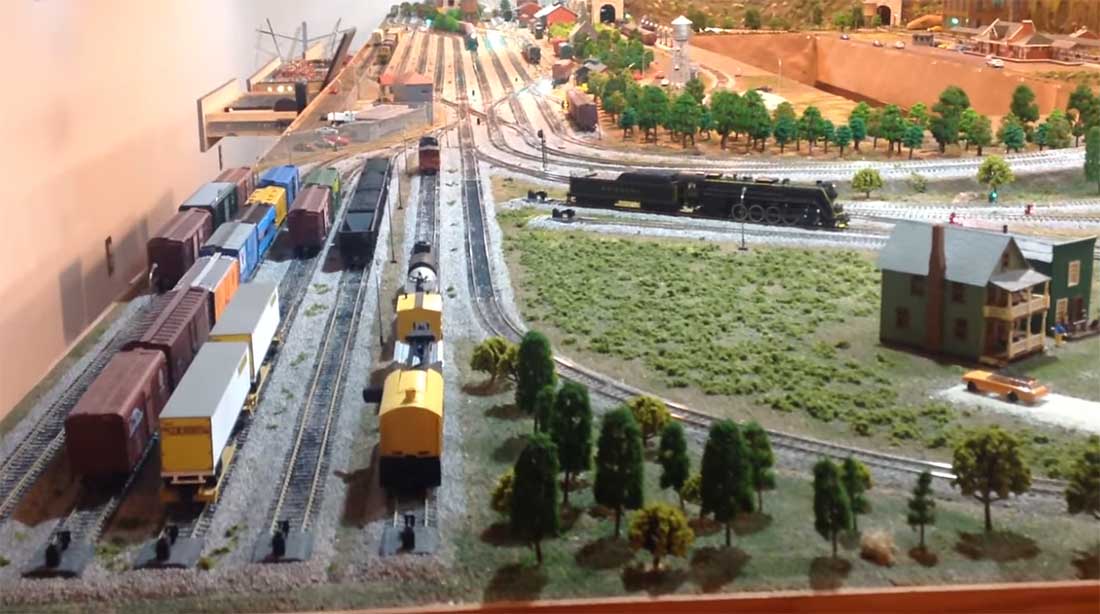
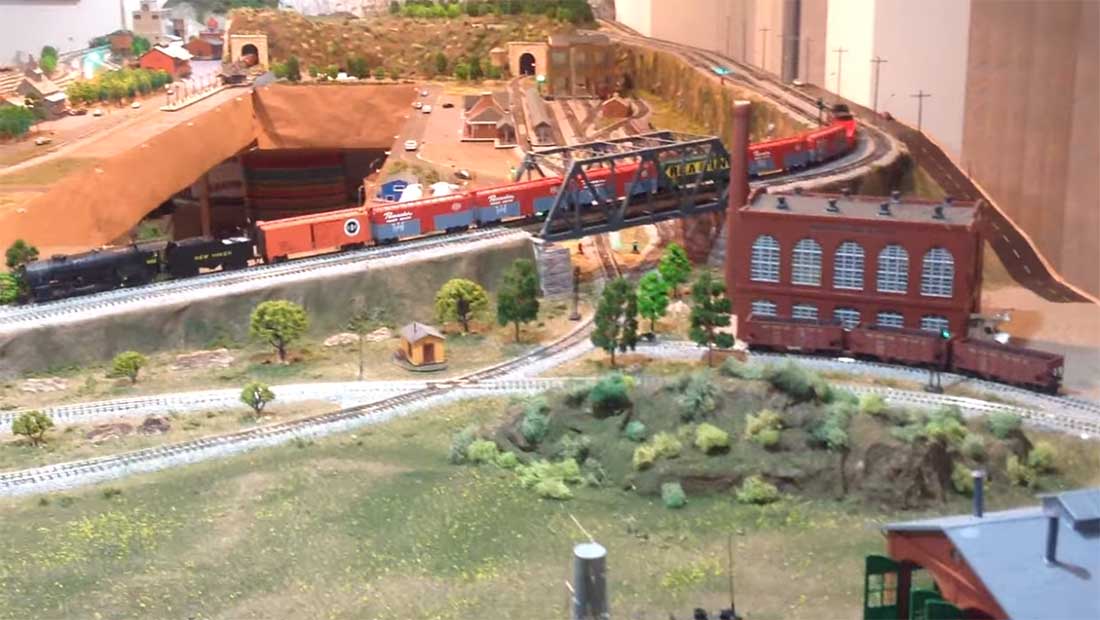
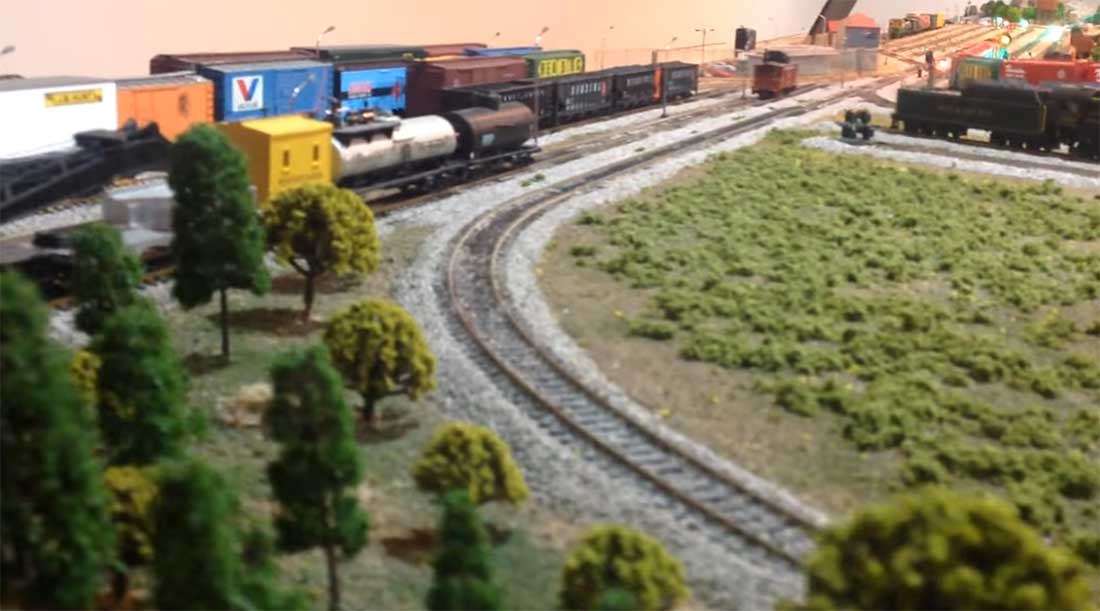
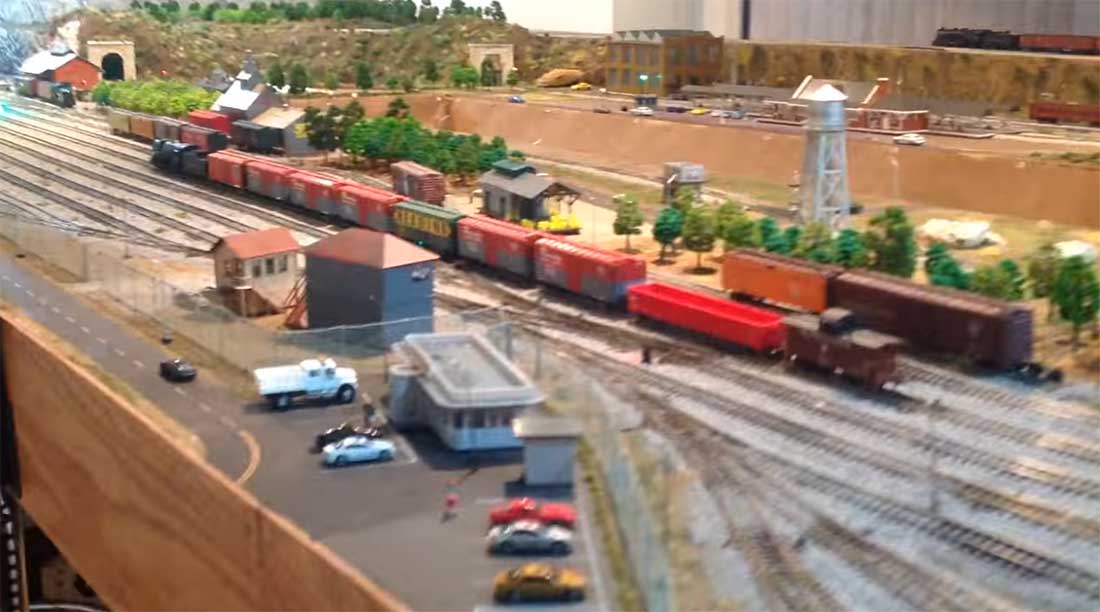
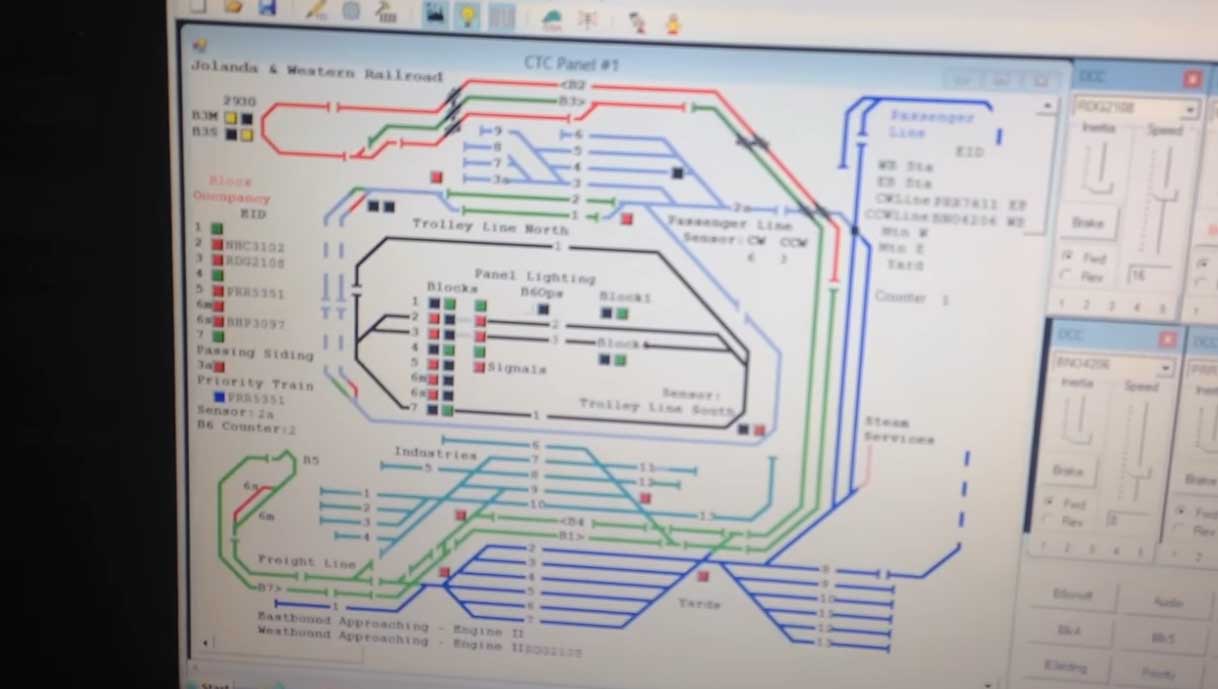
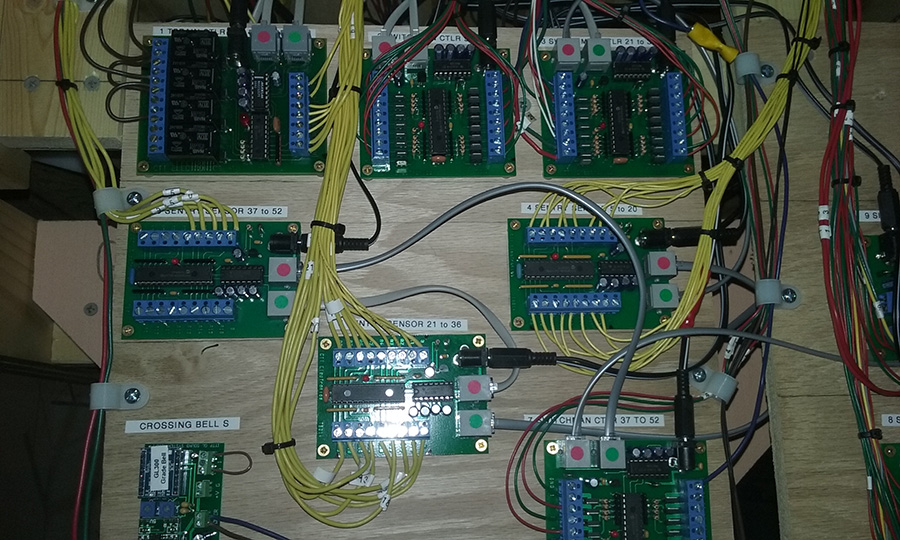
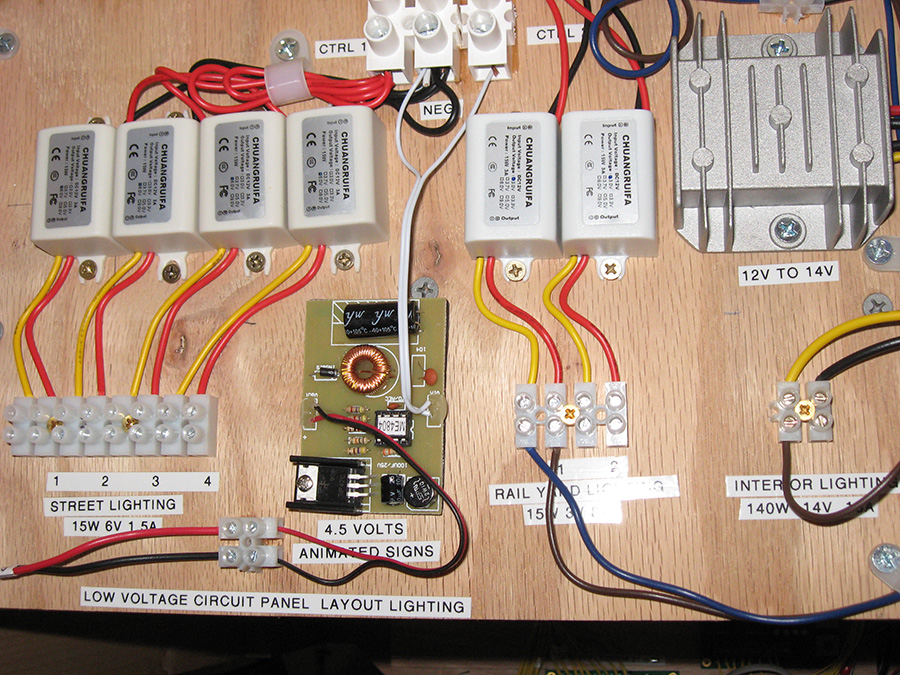
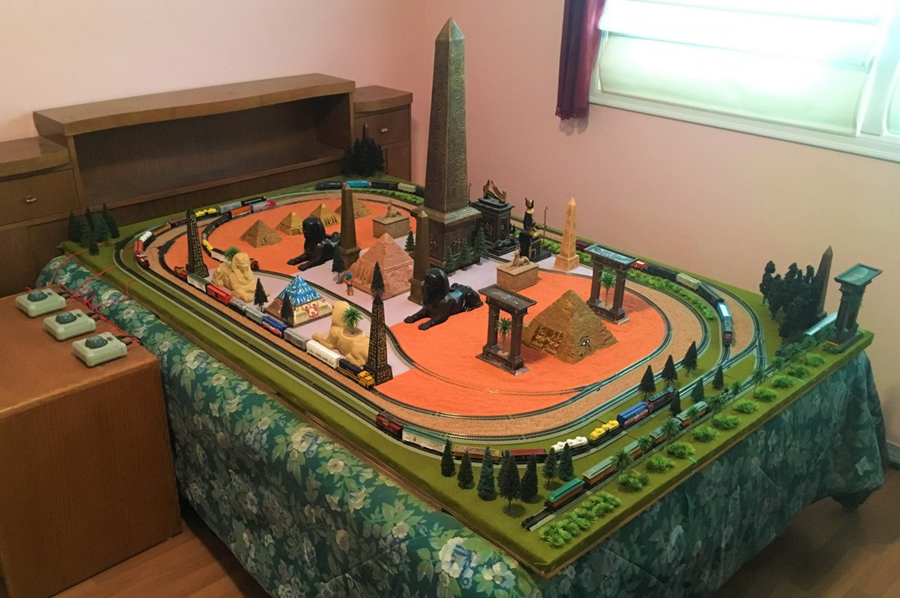
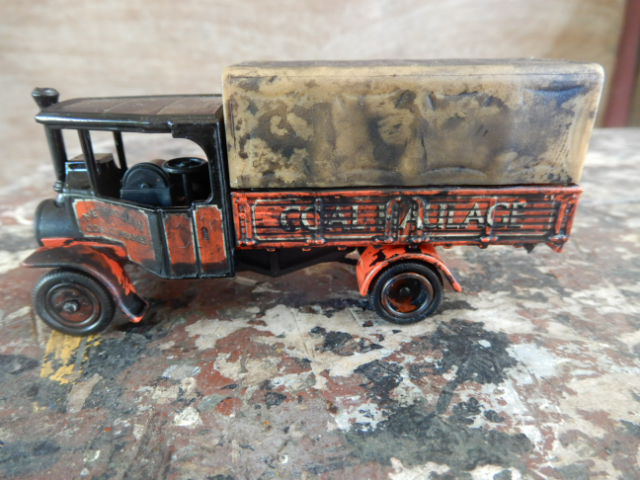

My Tip is don’t weather. I’m not a fan of dirtying up an expensive model train when it looks great brand new. I’ve found when you sell your item that’s weathered you get less $.
Where do you sleep?
Christopher’s N Scale is uniquely well done. I think the main attribute is, ‘order’.
Thanks for paying attention to weathering. I have worked on and for USA railroads for 50 years, and I can say with certainty that one thing is in common, world-wide and everywhere. Railroads are dirty. The cars, engines, track, and yes, after a day on the job, me. Most is rust, mixed with diesel smoke and or coal smoke around steamers. The towns, cars and all are also grimy. I disagree that models look better brand new. They look like what they are, plastic. That said, the great thing about our hobby is that there is really no “correct” way to model – to each his own!
Everything on my layout has a certain degree of weathering from minor to intense depending on the location placement in relation to my industrial areas. My personal feeling is that if there’s no weathering present, the object looks too “toy-like” for my tastes. But, of course, that is only my opinion ~ to each his own, as they say. I agree with another contributor about the “plastic-look” ~ why have it when you can make plastic look like stone, brick or even metal (rusty metal, at that) with a bit of weathering magic.
Regards, Tom (USA)
Christopher , I would love to see the track plan for your Egypt layout .
Thanks Al, I noticed I mispelled grey. The steam lorry was quite cheap to buy as I found it in a second hand store. the model was made by LLedo. It is only just 1/76 scale.
That is great. An Egyptian layout with an Southern Pacific Train. I love it. The idea of a layout with a special flavor such as yours is an awesome idea. I wish I had thought of it. It’s great. Rob McCrain – Farland Howe
I really like the Egypt setting! really nice work on the obelisk and all the other structures as well! very realistic and different!
The thing about weathering is that it is intended to increase the realism. So the dirt patterns need to be appropriate.
So dirt hands on the doors and tarpaulin, and especially around the wheels and mudguards. But the top of the tarpaulin would be cleaner. Depends how dirty the air would be, from local fallout from chimneys of factories and steam locos.
Black on top, and muddy below. And the glass needs dirt to match, cleaned by the wipers.
It’s all about the story.
Great imagination and creativity with that Egyptian style N gauge bed layout! Really enjoyable and quite startling to look at IMO!
-But wow, aren’t all those pointy obelisks uncomfortable to sleep on??
Skip
Really like always build it how you want it to be!
i have n scale layout i got the track up no houses yet been working on it for 4yrs.
i thought i would have something done but as anybody knows the wife always comes up w/ something elese.
like a 12 x 20 shed and then she wanted a screen-in-room. and thats where im at know .
‘from what i have seen on weathering it looks great for what ever the peoied is.
Nice wiring job! (From someone who had many hours of wiring experience)
Joe: WOW, very impressive, thanks for sharing
Joe
Great layout, lighting excellent and the scenery and the wiring, what can you say excellent.. Your layout does add some credence to aging and weathering being the way to go . My personal view is that your layout would jump again if you weathered your rolling stock. The rolling stock looks plastic and this is a great shame.
I suppose each to his own.
A great layout! — enjoyed watching it perform!
Joe………Your layout is amazing…….I wish I had the electrical knowhow that you have to put together such an impressive design. Amazing!!!!
As to Bruce and his bark, I agree. When our 150 yr old elm gave up the ghost, I saved lots of bark for part of my Mt. I was going to use it to make a rubber mold, but that had limited success (I should have “polyed” the bark first, but since I had plenty, a couple hours in the oven to insure no critters, and it worked very well.
A novel approach, Christopher. I only hope King Tut’s curse stays distant. Now I have the tune “walk like an Egyptian in my head. Nice decoration job.
Paul – that Lorry has worked hard, and so did you to make it look so. Nice job.
Joe, quite a set up and a nice ride around the place, and the wiring is a building inspectors dream.
Thanks, Al.
MN Dan
The big think I liked about Joe’s layout was the scale speeds the trains were going
The video shows a phenomenal layout. However, the camera work is dizzying. Too much movement. Pan the camera much more slowly.
Joe, your layout is amazing. What else can I say. That TCL is really something. I can see why it has taken you almost 4 years to complete.
Joe! Your layout is great and really enjoyable to watch operating. I have only ever seen such three detailed computer operated layouts before. One was a Marklin layout operated at our Royal Show and the other two were firstly a HO layout (1983) and then a N layout(2003) at the Deutsche Transport Museum in Munich. Thanks for sharing! Cheers Rossco Adelaide, South Australia
Christopher, What a great idea for a layout that’s not like anybody else’s! Very creative!
Joe, Fantastic wiring job! The video was very interesting but I got a bit tired of the repeating steam whistles. Thank you for running the trains at realistic speeds. As others have noted, setting the camera on a tripod or just slowing down the camera movements would make your videos more enjoyable. Is TCL an open source language or did you have to pay for it?
What I see today is RRing from both ends of the spectrum. A few good tips and never have seen the level of wiring and labeling before on such an expansive layout. Very close to aircraft grade with the terminations, combed wire runs and blueprinting (well labeled, not hen-scratching notations with marker.
Bark and such is a great idea for rolling landscape. Haven’t seen as such yet but a few photos would be excellent. Forgot as to why I used homosote for my RR decking and that’s because it’s fire proof. May smolder but seems that’s about it. No, haven’t tried plasterboard as yet lmao.
Trains and buildings should look weathered and used, a few falling apart. Everything looking new and plastic, no way! Never dabbing paint on with a brush, forget that idea but washes a must unless you own sandblaster (very light blast, not doing engines, running stock with that idea). Must be powdery, well used medium not new stuff at all. Would probably blow holes through the plastics, not walnut shells either.
Enough babbling for today. Those who can will do, those that can’t will teach. Hmm, still wondering on that adage…
Regarding, Rich
Hi Christopher. Unusual subject, a great idea and I’m sure as you develop the layout it will be something special. I would however suggest that you look again at scale overall within the layout. If the pyramids are to scale then the large oblesik would be hundred of feet high. I would suggest that the pyramids should be bigger. Etc. I think it could make a big step in bringing you whole layout in line. No pun intended.
Wow! Joe’s layout is Awesome. I couldn’t even imagine half the stuff he has on his layout. The circuitry is amazing. . I hope he knows how Blessed he is . WOnderful. I’ll save this for future viewing. Bob. N.C.
Joe – all I can say is Holy Toledo – most enjoyable 11:32 min vid I’ve watched in a long time – thanks for accessory tip – I’m actually running 3 AC accessory busses right now 6,12,and 18 VAC this is for my Gilbert American Flyer Layout which I plan to run completely off of AC as was the original intent from the factory back in the 50’s I have wrestled with this decision for years – your automation doesn’t make it easy to “stay the course” – 😂😂 very nice work though – very nice !
Darned IMPRESSIVE!
lots of wires and controlls. nice job. looks like spaghetti.
Slow your vid. down on your movements, you’re trying to get too much in & not enough of the detail. I had to stop watching as I got a headache 1/2 way thru. Otherwise, a great layout.
WOW !!!! WOW !!!! JOE, what an AWESOME layout and computer system !!!!!!!
I wish that I had the room and experience to build a layout like this !!!!! Thank you for sharing this awesome layout with us, I love it !!!!!!!!
Joe,
What’s with the tank car behind the Geep pulling the passenger train?
Tom in Mississippi
Chris has done one I dont think we ever have seen . Have to look up what type of equipment they run in Egypt . ??
Wow! Joe Magnificent layout.
Andrew in Oz